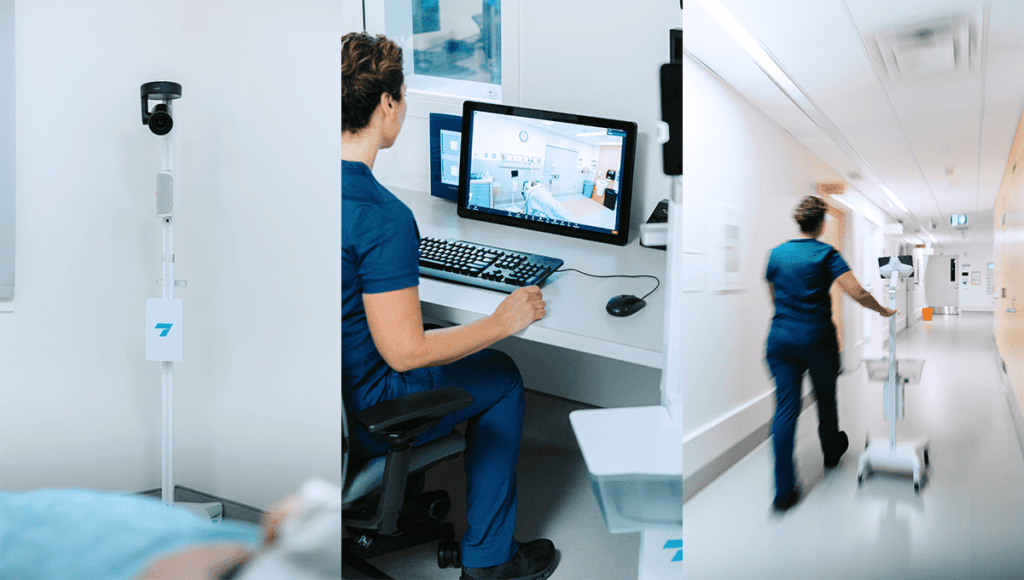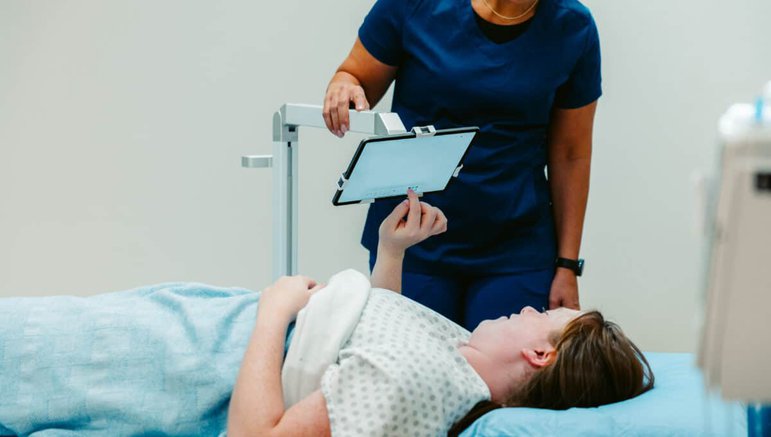
Virtual patient observation is a powerful tool that can help you monitor patients and anticipate medical complications. By leveraging advanced equipment and software designed for remote monitoring, you can ensure that your patients get the best possible care in real-time.
Virtual patient observation has become increasingly important in healthcare systems in recent years — and was vital during the COVID-19 pandemic. With the rise and cementation of telemedicine as a viable form of care, healthcare providers must be equipped with the right skills and techniques to observe and monitor patients virtually.
In this article, we’ll discuss some tips and techniques you should use when observing patients virtually. First, consider how virtual patient observation works and its benefits to your practice.
Virtual patient observation is an emerging telehealth technology in healthcare that allows you to monitor patients remotely, especially at-risk patients, over video. Some at-risk patients can include those at risk of falling, self-harm, wandering, injury, or other issues.
So how does it work?
Using a PTZ camera mounted on a Tryten cart, a trained staff member — a virtual sitter — stays at a control center and uses video controls to observe multiple patients simultaneously.
Virtual patient monitoring offers many benefits to you, your practice, and your patients.
Continuous monitoring allows patient sitters to get real-time insight into their patient’s health condition and behavior. They can immediately alert the on-site clinical staff if they notice anything that needs attention. As a result, patients with chronic conditions can receive the care they need more quickly and efficiently.
It also helps you make better decisions about treatment plans and provide better care by providing access to real-time patient data. Thus, you can meet your goals for virtual patient observation.
Virtual patient monitoring reduces healthcare costs by limiting the need for in-person hospital visits and expensive medical equipment. Furthermore, traditional patient monitoring requires a dedicated physical sitter for each room, significantly increasing the facility’s staffing needs. With hospitals struggling to attract and maintain a full staff, increasing the amount one nurse can do by taking it virtual is a game changer.
Virtual monitoring allows one patient sitter to monitor 10-15 patients at one time, reducing the number of staff you need and the hard and soft expenses that come with them.
Implementing virtual patient observation and telemedicine systems in your facility may seem daunting. Thankfully, there are five easy tips you can follow to ensure success.
Patient safety is of the utmost importance because it impacts the quality of patient care and the outcomes of their healthcare experience.
Training virtual patient sitters in patient safety helps them recognize and respond appropriately to potential risks and hazards. It also helps them understand how to properly report any issues that may arise while working with a patient in a virtual setting.
Training should cover topics such as:
Providing patient sitters with proper training ensures they have the necessary knowledge and skills to provide a safe, compassionate, and professional virtual environment for all patients.
Virtual care observation can be a great way to provide patients with comfort, knowledge, and support. However, many patients may feel apprehensive about this new method of provider-patient interaction.
Kindly and thoroughly educating them on what to expect will go a long way toward easing their fears.
First, explain the safety and comfort that virtual patient sitters provide. They can feel reassured knowing that someone is always there monitoring them. Additionally, the virtual patient sitter can be instrumental in noticing any changes in their behavior or condition that may require additional medical attention.
Secondly, you should emphasize the importance of communication between the patient and the virtual patient sitter. Ensure they understand that if they feel unwell or have questions about their care, they can comfortably and openly discuss it with the patient sitter at any time.
Ensuring your video technology is up to par is essential for providing the best patient experience and care in a virtual care observation system. You can attain the best virtual patient observation technology for virtual care observation in several ways.
First, you should invest in the best video technology for your virtual care observation system. High-quality video cameras, microphones, and speakers are all important components of an effective and successful video monitoring system. Investing in top-of-the-line video equipment also ensures that your system is reliable and free from glitches.
Next, you need to utilize an effective platform with strong scalability. It should be able to handle increasing numbers of users while also providing a reliable connection between users and patient data. It should also be user-friendly so that patient sitters can navigate the platform easily.
It’s also important to consider bandwidth. Bandwidth can affect video technology quality and virtual care observation’s overall effectiveness. Therefore, you should ensure you have enough bandwidth available at all times to ensure smooth communication between users.

In a virtual observation system, you must ensure your patients and nursing staff have access to the latest information. This includes regularly providing updates on the patient’s care, responding to questions or concerns, and offering reassurance to the patient’s family.
You should connect with patients via a secure electronic health record system to facilitate open communication with patients. This platform allows you to share relevant medical data and track changes in the patient’s condition over time.
You should also communicate with your hospital staff. They should be made aware of changes in the patient’s condition that may require additional support or care. They can then be a valuable resource for relaying information to the family and keeping them informed of the patient’s progress.
Finally, you should invest in high-quality equipment with ample bedside patient monitoring features.
For example, it’s always best to make remote patient monitoring devices available to patients, including:
Remote monitoring devices can immediately upload readings to your electronic health records system, allowing the sitter to view them in real-time with the video feed. This allows you to monitor, assess, and diagnose patients remotely. Another excellent investment is telehealth carts such as remote monitoring carts or virtual observation carts. These innovative tablet and a/v carts allow you to transport patient monitoring equipment throughout your healthcare facility, allowing you to deploy virtual patient observation exactly where you need it in the hospital.
Virtual Utilizing equipment such as Tryten’s innovative patient observation carts is an excellent way to enhance your existing workflows. Our revolutionary mobile carts hold multiple audiovisual devices and medical peripherals so you can easily transport the workstation throughout your practice, monitor multiple patients in different locations, and communicate with the patients in real-time. View our observation carts today to see how they can help you provide high-quality virtual care for your patients.